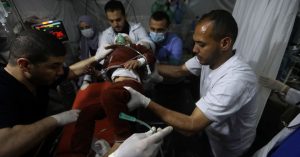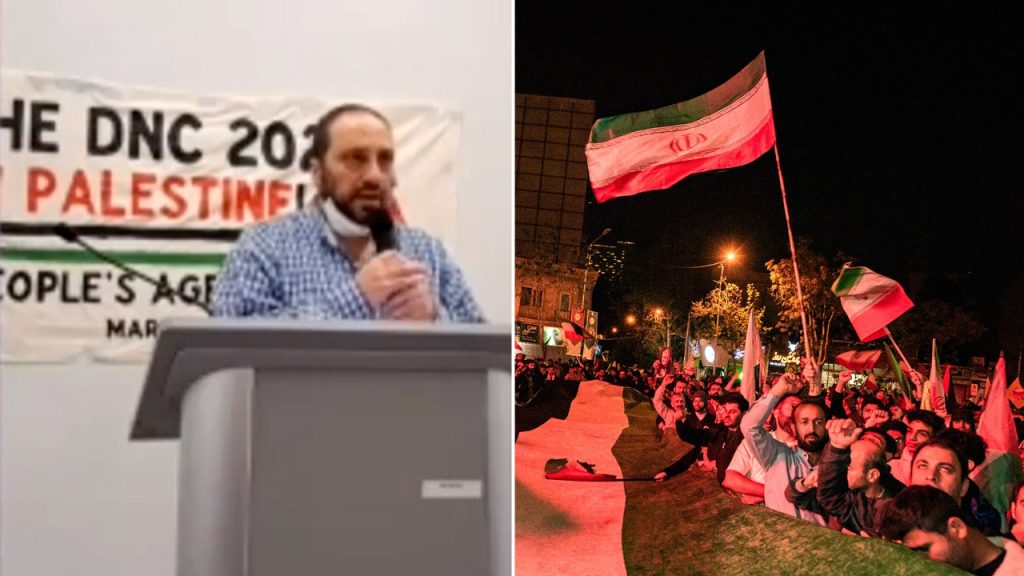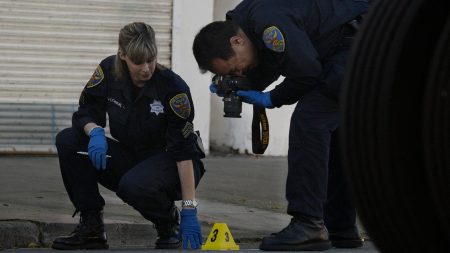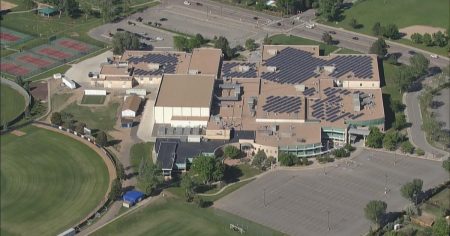On a Saturday in Chicago, a group of self-described anti-war activists, including March On DNC 2024 and Anti War Chicago, cheered upon hearing news that Iran had launched hundreds of drones and missiles at Israel. This attack was believed to be in response to an airstrike by Israel that killed a senior Iranian official in the country’s embassy in Damascus. The man who announced the attack to the group in Chicago spoke about violations of international law and the need for action against the U.S. defending Israel in the conflict. The attendees responded with cheers and booed at the idea of the U.S. getting involved in defending Israel, showing their support for Iran in the conflict.
The man speaking at the event called for immediate action from the anti-war movement and Palestine support coalitions in Chicago, urging them to be ready to hit the streets and stop the U.S. from expanding the war on Iran. The attendees were seen chanting “Hands off Iran!” in support of the Middle Eastern nation. Meanwhile, Israel had been prepared for a possible retaliation from Iran, with sophisticated defense systems intercepting the majority of the missiles and drones fired at the country. President Biden had warned of a potential attack on Israel from Iran, urging the Islamic Republic not to proceed with such actions.
Despite Biden’s warnings, Iran went ahead with its brazen attack on Israel, which some Republicans attributed to the president’s perceived weakness. The video footage from the event in Chicago showed the excitement and support from the anti-war activists for Iran’s actions against Israel. This incident highlighted the tensions and potential escalation in the conflict between the two Middle Eastern nations, with the U.S. possibly getting involved in the conflict as a defender of Israel. The cheers and chants from the attendees expressed their solidarity with Iran in the ongoing conflict with Israel.
The announcement of Iran’s attack on Israel sparked a sense of excitement and enthusiasm among the anti-war activists at the event in Chicago, who expressed support for the Iranian actions against Israel. The crowd’s response to the news reflected their aversion to the U.S. potentially getting involved in the conflict and their belief in standing against any further expansion of war on Iran. The call for immediate action and readiness to hit the streets demonstrated the determination of the attendees to prevent the conflict from escalating further and to support Iran in the ongoing tensions with Israel.
The event in Chicago served as a platform for the anti-war activists to show their solidarity with Iran and their opposition to the U.S. potentially defending Israel in the conflict. The cheers and chants from the attendees reflected their support for Iran’s retaliation against Israel and their resistance to any further escalation of the conflict. As tensions between Iran and Israel continued to rise, the event in Chicago highlighted the concerns and beliefs of the anti-war movement in the United States regarding the situation in the Middle East. The call for action and readiness to protest against any involvement of the U.S. in the conflict demonstrated the determination of the attendees to stand against war and support Iran in the ongoing tensions with Israel.
















